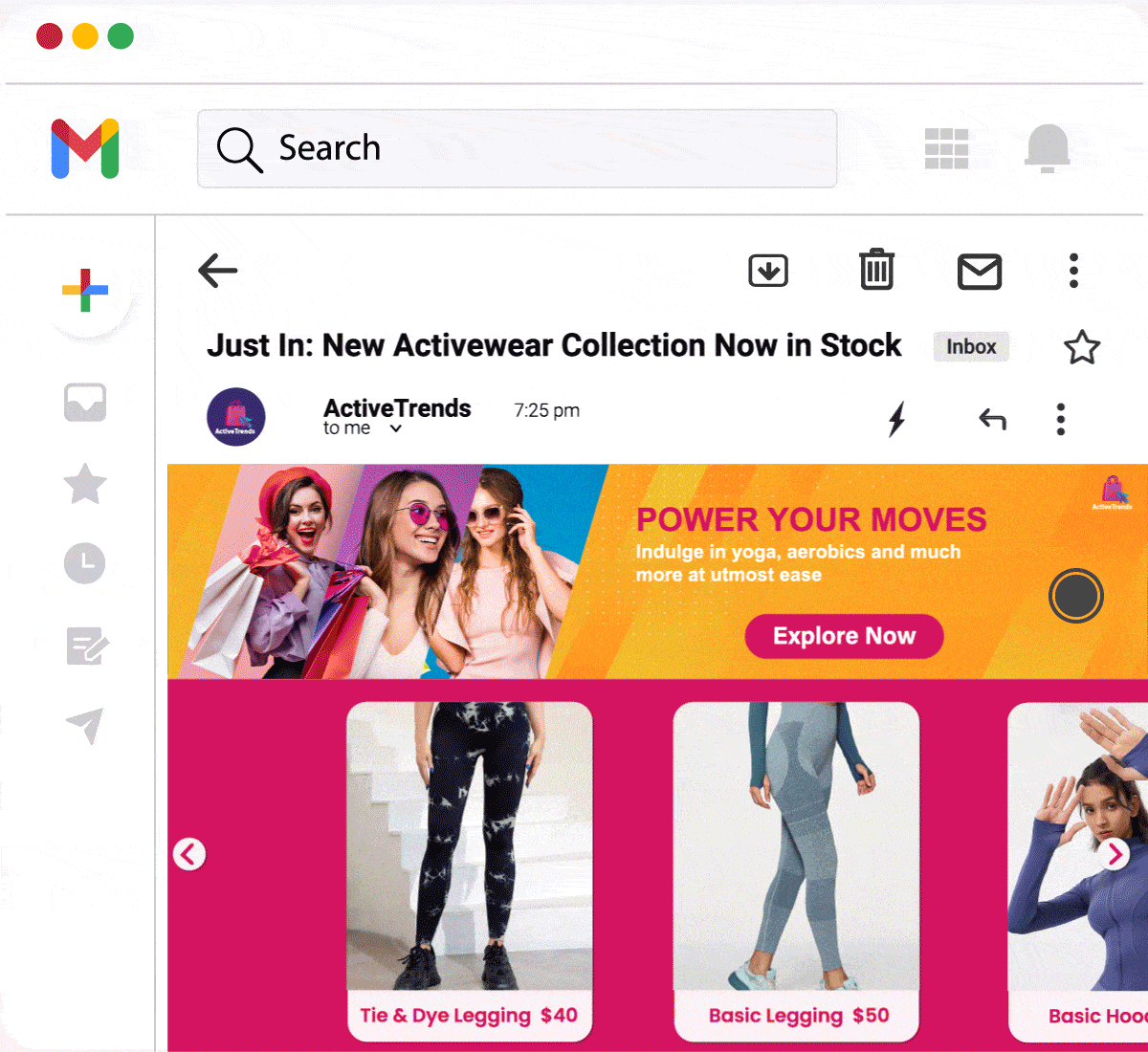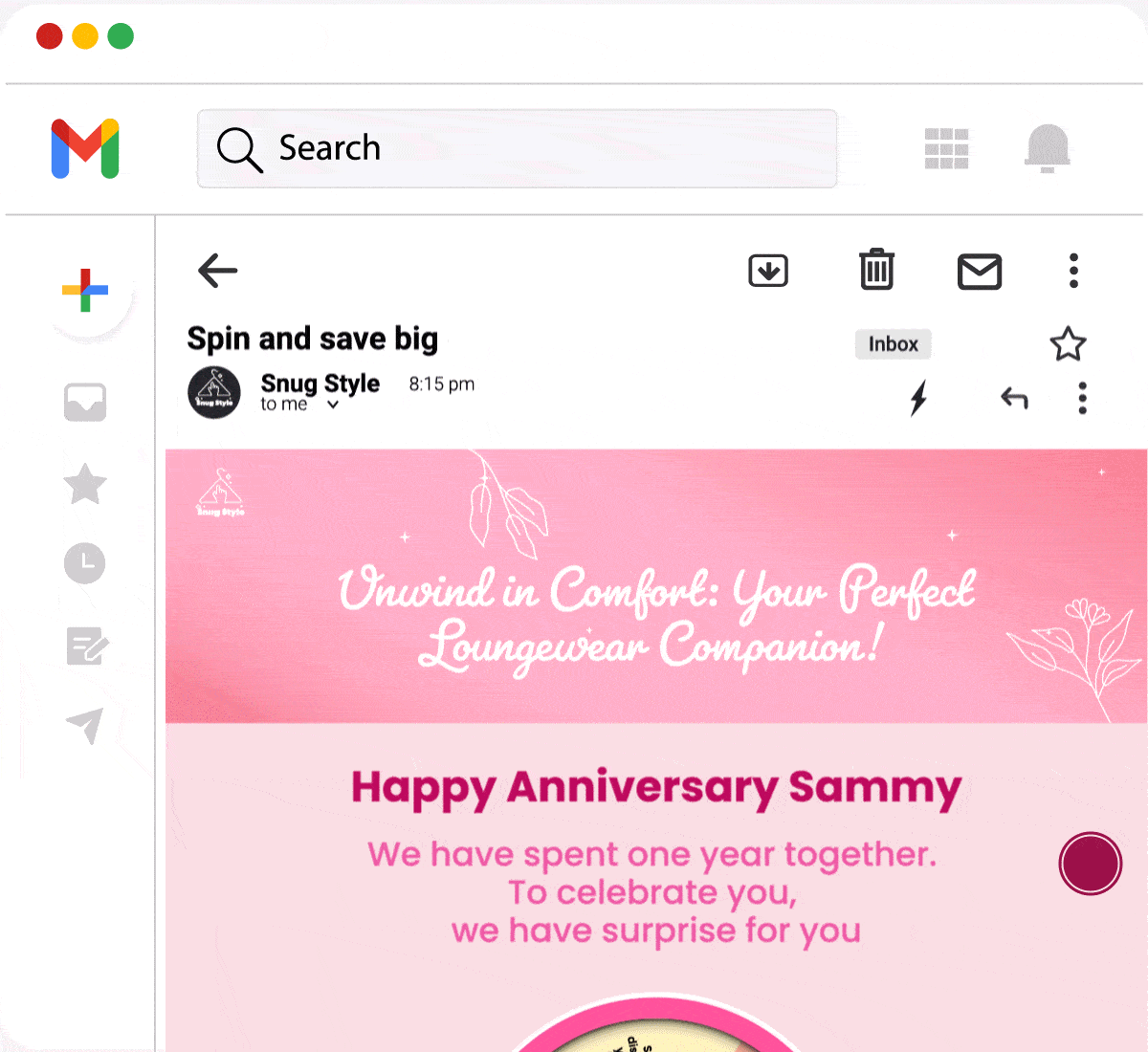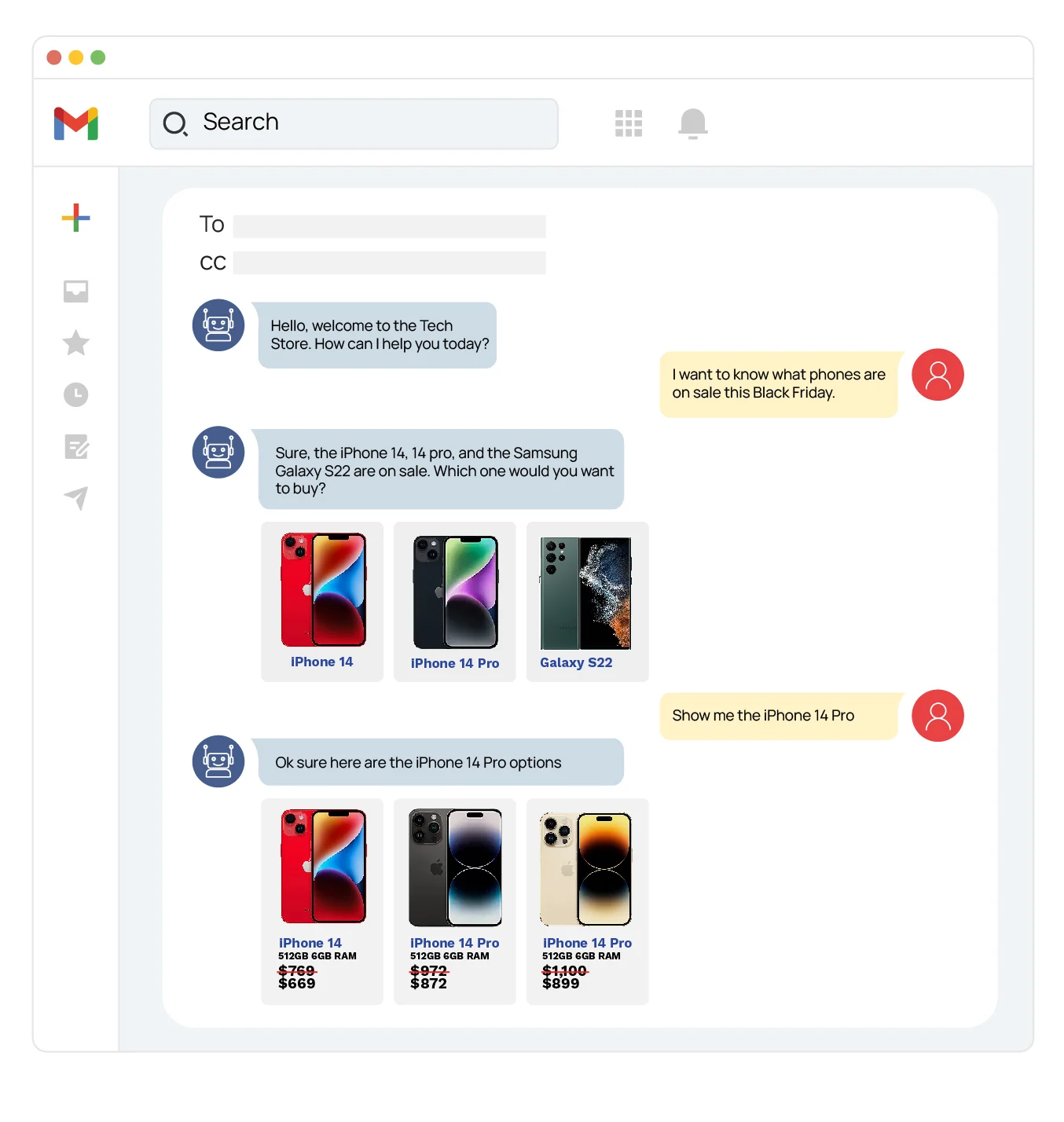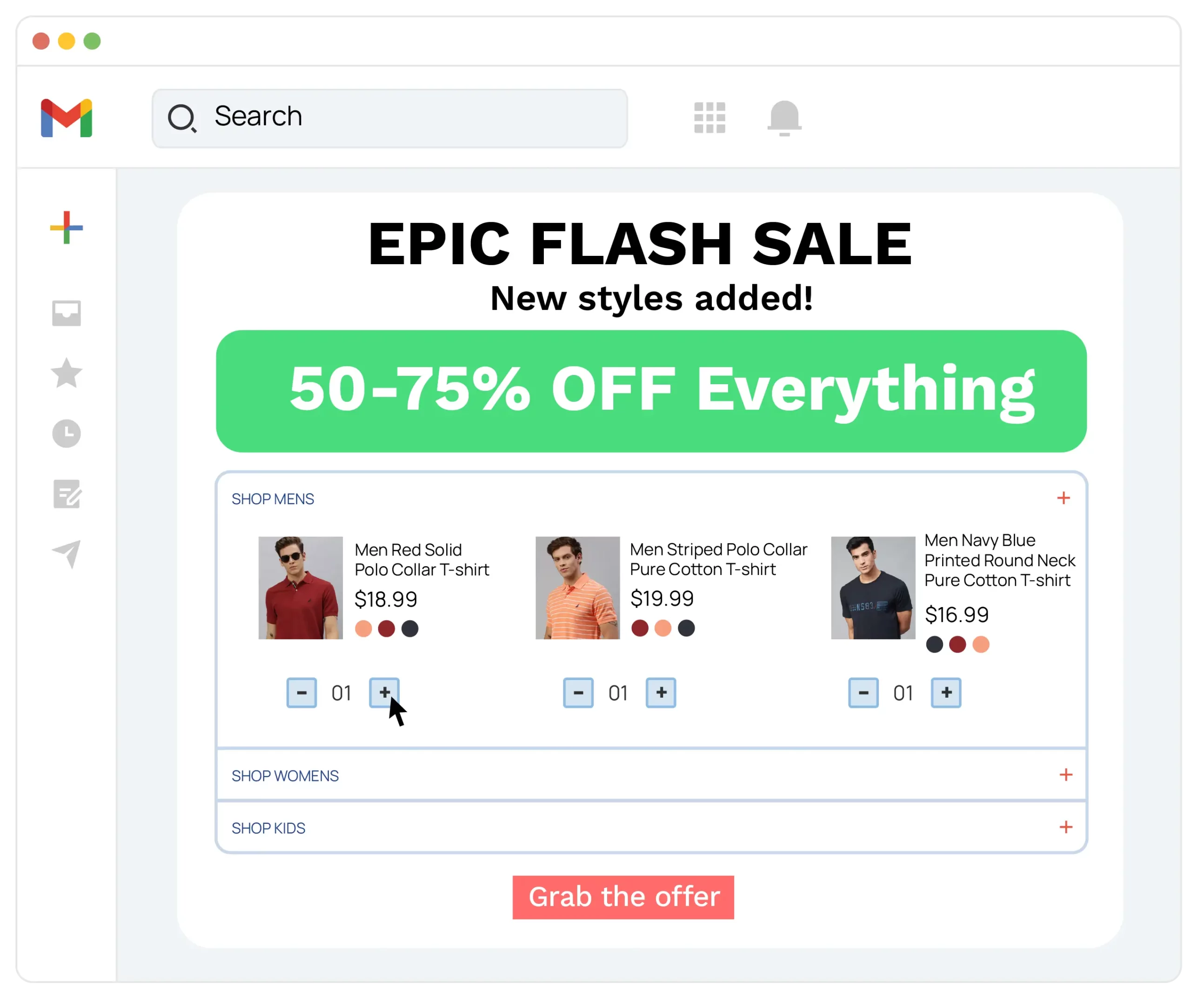Every brand dreams of retaining customers. Indeed, focusing on new customers can bring in business, but imagine being in the brand’s shoes, allocating vast resources to acquire new customers every time. This classifies as an unsustainable business model. In today’s landscape, “Customer Lifetime Value” (CLV) is widely recognized as a better measure of business success than new customer acquisition. CLV quantifies the long-term monetary impact of customer relationships on an organization. Maximizing CLV is pivotal for sustained profitability, growth, and market durability. In this blog – we’ll explore five strategic ways brands can leverage Inbox Commerce to enhance CLV and foster customer loyalty for enduring success. But first, let’s understand the significance of CLV.
The Significance of Customer Lifetime Value
Knowledge of Customer Lifetime Value allows businesses to identify and concentrate on profitable customers. This allows you to channel their resources into areas where they will generate the most significant revenue in the long run. When customers are retained for longer durations and their value increases, companies can invest in more quality customer acquisition strategies with confidence, knowing that these new customers will contribute positively to the company’s bottom line, over time.
On the contrary, When customers fail to generate enough value over their lifetimes, companies need help to cover the costs of new customer acquisition, leading to decreased profitability. Limited CLV often indicates that companies are overinvesting in acquiring new customers while not adequately nurturing existing ones. The consequence is that existing customers who could potentially have a higher CLV, are lost.
Now that we’ve underscored the significance of Customer Lifetime Value as a crucial business metric let’s delve into effective strategies for enhancing it by utilizing a groundbreaking email technology known as Inbox Commerce.
Enhancing Customer Lifetime Value with Inbox Commerce
With Inbox Commerce, brands can take a more end-to-end, app and web-like approach with email. Brands can now integrate the entire shopping journey into their customer’s inboxes, encompassing product discovery, purchase decisions, and customer loyalty.

A typical inbox commerce email with interactive search bar, cart manipulation, and add-to-cart features
Imagine this scenario: you, a dedicated marketer, rely on conventional email. Within the constraints of outdated HTML technology, your creative freedom is limited to a mere splash of distinct colors. Your content strives to be captivating, but it needs help.
With Inbox Commerce you can include:
1. ‘Next Best Product’ Recommendations via Accordions and Carousels
Inbox Commerce empowers businesses to deliver highly personalized product recommendations directly to their customers’ inboxes. This level of personalization is designed to cater to individual customer preferences, increasing the likelihood of conversion.
By leveraging real-time data, customer behavior, and purchase history, businesses can send targeted recommendations that not only enhance the customer experience but also increase CLV.
Send your most profitable shopper cohorts a carousel of beautiful themes. It speeds up and enhances their product consideration. They no longer need to sift through countless options to find items that resonate with their taste. Instead, they are presented with a visually appealing selection that captures their attention immediately. Keep delighting your shoppers with these experiences consistently to make them feel wanted.

Furthermore, use an accordion-style display to recommend a clear and organized view of ‘personalized’ product suggestions. This eliminates the need for customers themselves doing extensive research and comparison. Customers can conveniently expand sections of interest to gather detailed information. This adds a unique level of convenience to the regular shopping experience. It enhances the shopper’s journey.

These immersive experiences are a far cry from the static images and lengthy product descriptions typical of traditional marketing emails. Inbox Commerce is so powerful it goes beyond mere presentation—it empowers your shopper to actively engage with the product.
2. Spin-the-Wheel Games
Incorporate gamification elements within emails to powerfully optimize CLV. Use Inbox Commerce to create interactive games, quizzes, and reward systems like spin-the-wheel games, word-based puzzles, riddles… and more. Keep customers engaged and incentivized. Gamification encourages customers to interact with emails. It leads to increased open rates and click-through rates.

3. AI-Powered Chatbots
Enhancing customer perception of your brand involves creating enjoyable interactions rather than purely transactional ones. It fosters continued relationships. Streamlined loyalty programs, exemplified by an AI-powered chatbot, encourage engagement and purchases and strengthen brand loyalty and long-term value. When you integrate a personalized AI chatbot through Inbox Commerce, you create magical experiences, you aid shoppers in their daily activities at a 1:1 level. Try to explore these interactive capabilities of Inbox Commerce firsthand –

Did you know? Photobook Worldwide utilized this Inbox Commerce feature and reactivated 18% of its dormant customer base. Read the full case study here.
4. Exclusive Flash Sales and Time-Sensitive Offers
Inbox Commerce empowers businesses to send exclusive flash sales and time-sensitive offers via email. By creating a sense of urgency, encourage your customers to make immediate purchase decisions. Limited-time discounts, countdown timers, and special offers pique customers’ interest and drive impulse purchases. These time-sensitive campaigns not only boost short-term revenue but also impact customer f positively. When customers experience a series of enticing and exclusive offers, they are more likely to remain engaged and make repeat purchases, increasing their overall value to the brand.

5. Post-Purchase Followups
Crafted with Inbox Commerce in mind, this initiative is tailored to reignite interest among dormant or infrequent customers. By employing an automated feedback loop, you can extract invaluable insights from these customers. You can accurately comprehend their reservations or disinterest, and implement suitable strategies to reconnect. By deploying 24/7 personalized feedback prompts and precise surveys, you can use this automated journey to open avenues to tackle customer apprehensions, elevate their journey, and reignite their enthusiasm for your brand.

Did you know? 99 Group, Singapore’s largest real-estate portal optimized their email campaigns with the use of interactive forms within emails and increased their lead generation to 5X and conversions by 30%. Read the full case study here.
Conclusion
Customer Lifetime Value (CLV) stands as a guiding star for companies. It illuminates the path to sustained profitability and growth. A high Customer Lifetime Value is a testament to a brand’s prowess in nurturing enduring customer relationships.
With the introduction of Inbox Commerce, businesses have a powerful ally in their quest to enhance CLV. Through a combination of personalized recommendations, engaging gamification, streamlined product discovery, exclusive offerings, and dynamic email campaigns, you can optimize their CLV and cultivate a loyal, high-value customer base. This, in turn, paves the way for a mutually beneficial relationship, where businesses provide customers with captivating shopping experiences, and customers, in turn, contribute to the company’s ongoing success.
Embracing Inbox Commerce is not merely an option but a strategic imperative. By maximizing Customer Lifetime Value, you secure your future, stand out in the hearts of customers, and embark on a journey of innovation and success that extends far into the horizon. The time to explore the potential of Inbox Commerce is now—your customers and your bottom line will thank you.
For a deeper insight into Inbox Commerce use cases, download our ebook and read our blog on the same. The blog showcases real-life KPI improvements for each case and provides detailed examples of how retail brands have leveraged Inbox Commerce.







